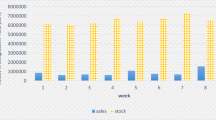Abstract
This study examines visible consumption patterns among racial/ethnic minorities and whites in the USA. We use data from the Consumer Expenditure Interview Survey (CEX) and the Current Population Survey to measure consumption behaviors. Expenditure on clothing is used as a measure of visible consumption. Our hypotheses are derived from the visible consumption theoretical framework as posited by Veblen and from status display models. However, contrasting with these theoretical frameworks, our results do not confirm previous findings that African Americans and other minorities have higher levels of expenditures on visible items as compared to whites. Instead, we find income, education and occupation (socioeconomic status) to be more important predictors of visible consumption than race and ethnicity. Further, we find that consumption behaviors are influenced by the proportion of whites in a metropolitan area, which we do relate to race/ethnicity. We pay particular attention to the consumption behaviors of racial minorities in relation to their metropolitan area racial composition. Our results raise interesting questions about the theoretical propositions made regarding differences in visible consumption expenditures among racial/ethnic groups.

Similar content being viewed by others
References
Alexis, M. (1970). Patterns of black consumption 1935–1960. Journal of Black Studies, 1(1), 55–74.
Barber, B., & Lobel, L. S. (1952). “Fashion” in women’s clothes and the American social system. Social Forces, 31(2), 124–131.
Blumberg, P. (1974). The decline and fall of the status symbol: Some thoughts on status in a post-industrial society. Social Problems, 21(4), 480–498.
Borrell, L. N., Kiefe, C. I., Diez-Roux, A. V., Williams, D. R., & Gordon-Larsen, P. (2013). Racial discrimination, racial/ethnic segregation, and health behaviors in the CARDIA study. Ethnicity and Health, 18(3), 227–243.
Bratter, J. L., & Gorman, B. K. (2011). Is discrimination an equal opportunity risk? Racial experiences, socioeconomic status, and health status among black and white adults. Journal of Health and Social Behavior, 52(3), 365–382.
Brown, T. N. (2001). Exposure to all black contexts and psychological well-being. African American Research Perspectives, 7, 157–172.
Celious, A., & Oyserman, D. (2001). Race from the inside: An emerging heterogeneous race model. Journal of Social Issues, 57(1), 149–165.
Charles, K. K., Hurst, E., & Roussanov, N. (2009). Conspicuous consumption and race. Quarterly Journal of Economics, 124(2), 425–467.
Crane, D. (2000). Fashion and its social agendas: Class, gender, and identity in clothing. Chicago: The University of Chicago Press.
Dailey, A. B., Kasl, S. V., Holford, T. R., Lewis, T. T., & Jones, B. A. (2010). Neighborhood- and individual-level socioeconomic variation in perceptions of racial discrimination. Ethnicity and Health, 15(2), 145–163.
Donthu, N., & Cherian, J. (1992). Hispanics coupon usage: The impact of strong and weak ethnic identification. Psychology and Marketing, 9(6), 501–510.
Evans, L., & Feagin, J. R. (2012). Middle-class African American pilots: The continuing significance of racism. American Behavioral Scientist, 56(5), 650–665.
Fan, J. X. (2000). Linking consumer debt and consumer expenditures: Do borrowers spend money differently? Family and Consumer Science Research Journal, 28(3), 357–400.
Fan, J. X., & Lewis, J. K. (1999). Budget allocation patterns of African Americans. Journal of Consumer Affairs, 33(1), 134–164.
Fleming, C. M., Lamont, M., & Welburn, J. S. (2012). African Americans respond to stigmatization: the meanings and salience of confronting, deflecting conflict, educating the ignorant and ‘managing the self’. Ethnic and Racial Studies, 35(3), 400–417.
Fossett, M. A., & Kiecolt, K. J. (1989). The relative size of minority populations and white attitudes. Social Science Quarterly, 70(4), 820–835.
Hunt, M. O., Wise, L. A., Jipguep, M., Ozier, Y. C., & Rosenberg, L. (2007). Neighborhood racial composition and perceptions of racial discrimination: Evidence from the black women’s health study. Social Psychology Quarterly, 70(3), 272–289.
Jackson, P. B., Thoits, P. A., & Taylor, H. F. (1995). Composition of the workplace and psychological well-being: The effects of tokenism on America’s black elite. Social Forces, 74(2), 543–557.
Kleinbaum, D. G., Kupper, L. L., Muller, K. E., & Nizam, A. (1998). Applied regression analysis and other multivariable methods. Pacific Grove, CA: Duxbury Press.
Krysan, M., & Farley, R. (2002). The residential preferences of blacks: Do they explain persistent segregation? Social Forces, 80(3), 937–980.
Lamont, M., & Molnar, V. (2001). How blacks use consumption to shape their collective identity: Evidence from marketing specialists. Journal of Consumer Culture, 1(1), 31–45.
Omori, M. (2010). Household expenditures on children, 2007–2008. Monthly labor review, September, 3–16.
Segura, D. A. (1992). Chicanas in white-collar jobs: “You have to prove yourself more”. Sociological Perspectives, 35(1), 163–182.
Stainback, K., & Irvin, M. (2012). Workplace racial composition, perceived discrimination, and organizational attachment. Social Science Research, 41, 657–670.
Upton, R. D., Panter, A. T., Daye, C. E., Allen, W. R., & Wightman, L. F. (2012). Examining the relationship among self-reported assertiveness, perceived discrimination, and college environment in a national sample of black women law students. Psychology of Women Quarterly, 36(1), 54–65.
Veblen, T. (1894). The economic theory of woman’s dress. The Popular Science Monthly, 46, 198–205.
Vespa, J., Lewis, J. M., & Kreider, R. M. (2013). America’s families and living arrangements: 2012. Current population reports, P20-570. U.S. Census Bureau: Washington, DC.
Wagner, J., & Soberon-Ferrer, H. (1990). The effect of ethnicity on selected household expenditures. Social Science Journal, 27(2), 181–199.
Wallendorf, M., & Reilly, M. D. (1983). Ethnic migration, assimilation, and consumption. Journal of Consumer Research, 10(3), 292–302.
Walton, E. (2012). Resurgent ethnicity among Asian Americans: Ethnic neighborhood context and health. Journal of Health and Social Behavior, 53(3), 378–394.
Williams, D. R., Haile, R., Mohammed, S. A., Herman, A., Sonnega, J., Jackson, J. S., & Stein, D. J. (2012). Perceived discrimination and psychological well-being in the USA and South Africa. Ethnicity and Health, 17(1/2), 111–133.
Author information
Authors and Affiliations
Corresponding author
Rights and permissions
About this article
Cite this article
Omori, M., Smith, D.T. The Impact of Socioeconomic Status and Metropolitan Area Racial Composition on Visible Consumption Among Whites and Racial/Ethnic Minorities. Race Soc Probl 7, 169–180 (2015). https://doi.org/10.1007/s12552-015-9149-2
Published:
Issue Date:
DOI: https://doi.org/10.1007/s12552-015-9149-2




